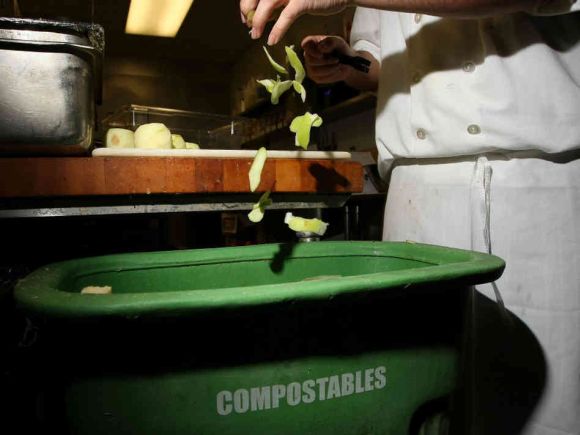Given that food is indeed the second-largest expense with in restaurant industry, this amounts to hundreds of dollars per day. Additional garbage equals more hauling charges, landfill fees, equipment expenditures, and so on.
According to the EPA, single-use goods, containers, & packaging waste account for approximately 23% of all garbage entering landfills in the US. Worse, the pandemic has raised demand for takeaway and delivery.
Best-in-class restaurants are increasingly rethinking their waste management methods alongside consultants and trash management businesses. We’ve found four strategies to reduce food waste, save money, and adopt green restaurant best practises.
1.Set Goals
To reduce waste output, plan waste management, and boost revenues, first establish your goals. Whatever your goals, they will fall into one of three categories: decrease waste, reuse, or recycle. To achieve the other two goals, you must first reduce trash production.
Determine what has to be completed to reach each goal. So, before concentrating your efforts, monitor waste creation.
2.Track & Analyze Restaurant Waste
Taking initiative will be futile until you know how so much waste your business produces daily. The objective is to find out which foods wind up in the garbage bins more frequently. So you can work just on supply and demand variables afterwards.
During the trash audit, you might consult staff and customers. This can help you determine how so much serving is needed and how much goes to waste. Using this data, one can track the daily or weekly bills and identify wasteful expenditures. It’s now clear how you have greater organic waste.

3.Assess Current Services
Once you’ve identified the major waste sources, tackle them one by one. So if you’re overspending on food, adjust your strategy. After lowering food costs and minimising food waste, you might adjust the menu or reduce food portions.
Other actions you can do include:
Make intelligent purchases: buy less-demanded foods in modest quantities to reduce waste.
Change the serving ware, such as plates and glasses, to limit food portions and leftovers.
This really is crucial to maintaining restaurant order and ensuring everyone understands your aims.
4.Recycling
Every year, a single restaurant generates 50 tonnes of waste, 76 percent of which is organic and thus recyclable. Recycling is increasingly standard in the hospitality business, with over 65% of restaurants in a Us recycling waste. Some have even proclaimed themselves trash-free due to their creative waste management.
Here is how you may adopt Reuse and Recycling in your restaurant with the correct waste management provider.
Organic food trash can be used to generate sustainable energy. These wastes can be composted and used to enhance soil. To avoid introducing non-biodegradable elements into the soil, thorough sorting is required.
Plastic bottles, cans, paper, and wooden pallets can all be reused or recycled.
Join the green movement by promoting and purchasing recycled products. This is the finest approach to help recyclers.
Restaurant waste management shouldn’t be difficult if you know where to search. Waste recycling initiatives can help your organisation evolve as the globe adopts green and clean waste management techniques.
Remember to do each of the four steps one at the time. Setting goals forces you to focus on specific objectives. Then you can easily organise your team, decrease waste production, track waste management efforts and even cooperate with waste recycling providers.

